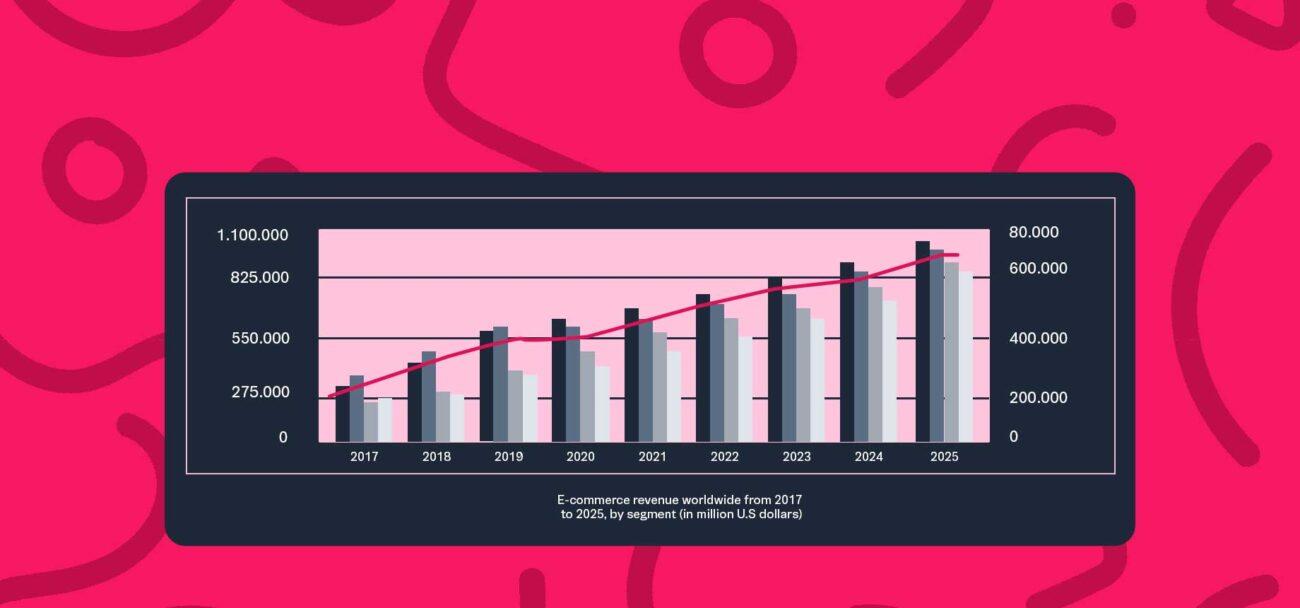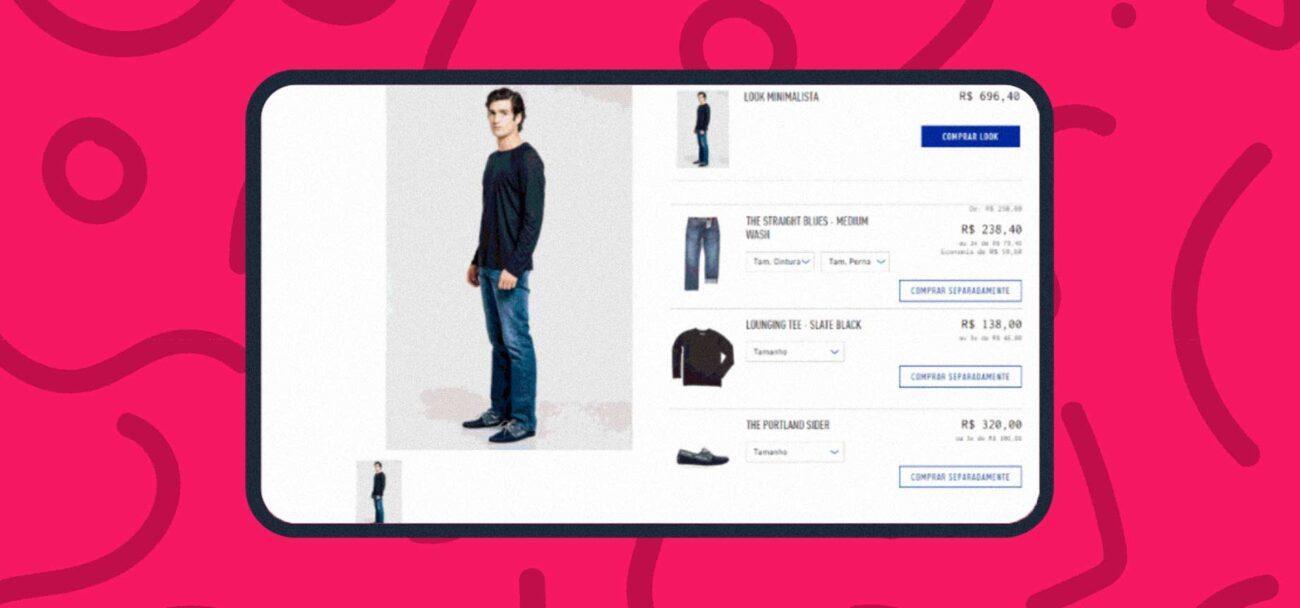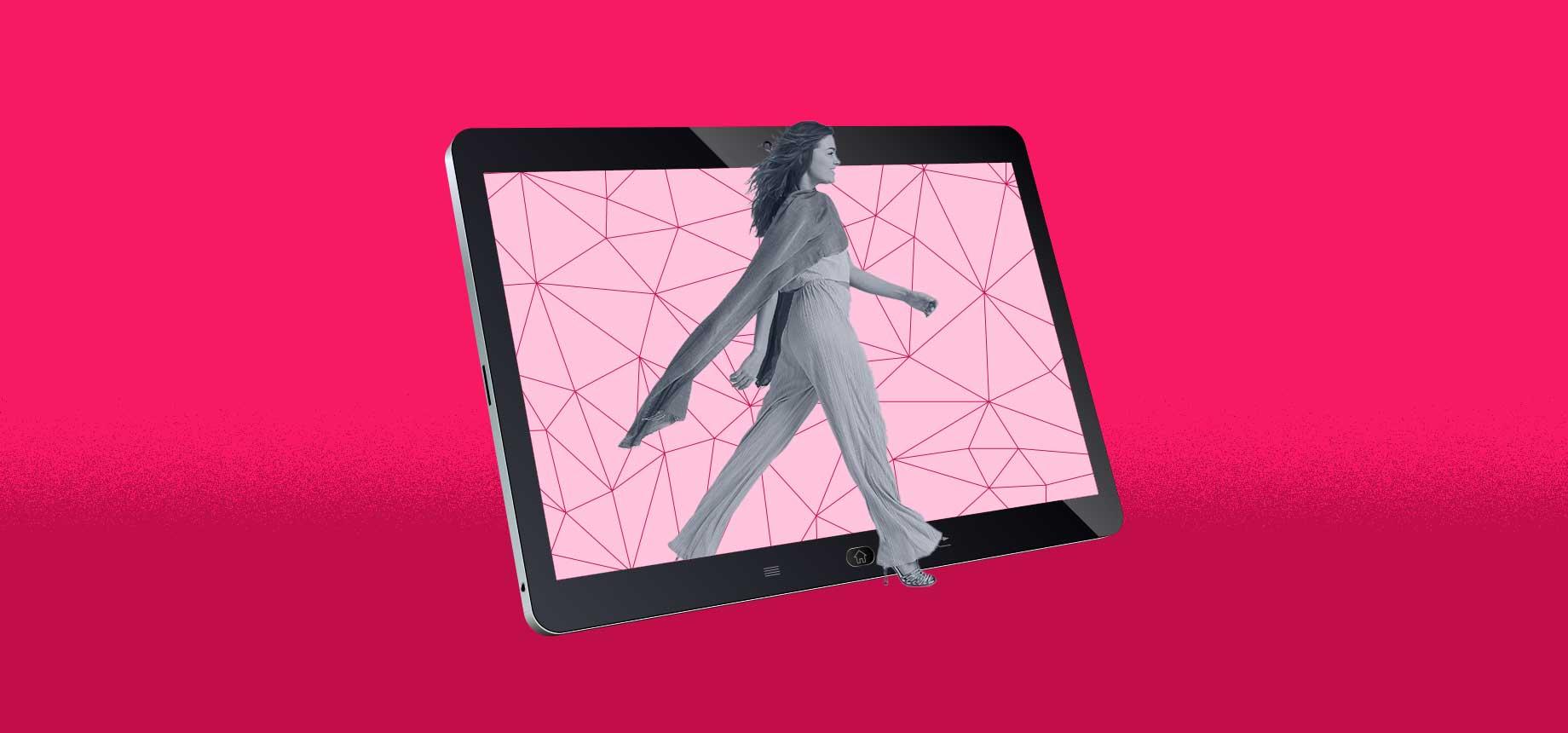The global fashion industry has been reinventing itself and increasingly gaining space in the digital world. According to Statista, a German company specializing in market data, fashion is the largest industry in the B2C ecommerce market, and its global size was estimated at just over $750 billion dollars by 2020. This industry is expected to continue its steady growth and reach a total market size of around $1.1 billion dollars by the end of 2025.
Below you can see the chart illustrating global ecommerce revenue from 2017 to 2025:

Despite the accelerated growth of the apparel industry (the darkest in the chart) in the global ecommerce market, it still faces some challenges with the consumer buying journey in the digital world. These challenges are mainly about how to generate confidence in the product and the process, including after-sales.
Below we will explore two macro challenges of going on this digital path and some solutions that help mitigate them.
Humanized shopping experience
The first challenge is related to making the product tangible and humanizing the digital experience, that is, how to bring it closer to the experience that happens in the physical store where the consumer has the product in hand to touch and experience it, and the sales associate available to serve and guide them. Trends like live shopping and conversational commerce are just a few of the many alternatives to improve the shopping experience in ecommerce.
Features for your website
Virtual fitting room
The virtual fitting room is a tool that uses artificial intelligence from information provided by the user to recommend the ideal size. In addition to increasing trust and, consequently, conversion, this solution tends to reduce the number of exchanges and returns, since it gives the consumer a better sense of size and how the product would look on the body.
However, It is important to remember to teach the consumer how to take the measurements that will serve as input for the result. For example, the most common way is by posting an illustrative photo that indicates exactly where and how to measure your bust, hips, waist, and foot size.

Look kit
Now it is possible to provide the photo or video of the complete look through ecommerce or social media and give the consumer the possibility to buy all of the pieces that make up the look.
The so-called “look kit” is a method that allows consumers to purchase multiple products that go with each other by viewing only one screen. The consumer views a look kit as a suggestion and, it ends up working as a way to complement the sale and offer new products for the consumer to discover as if it was being recommended by a sales associate.

Live shopping
Another important solution that has been gaining popularity, especially in the fashion industry, is live shopping. It is a strategy that allows the consumer to interact with the store live, through a streaming service, and close the order on the spot, on the same screen, during the stream.
Many stores have been using not only salespeople but also digital influencers to present the live streams and attract the public. This is the case of Dengo, a VTEX client that last year launched a live shopping initiative to humanize purchasing during the lockdown period. With the 100% responsive Live Shopping app available on the VTEX App Store, you can add the capability directly to your store and take advantage of the selling benefits this strategy offers.
This is the fastest-growing format in China, the country that created this modality. Besides the direct interaction between brand and consumer, which allows answering questions, sharing details, and showing the product, live streams can present exclusive content and be a good tool for capturing leads.

Conversational commerce
Conversational commerce is also an important ally when it comes to increasing consumer trust in the digital world and creating a relationship with the brand through personalized service.
It is a strategy that leverages using messaging apps, such as WhatsApp, and social media, such as Facebook Messenger, to connect with the consumer, ask questions, and make sales. Ideally, there should be a combination of elements between chatbots, artificial intelligence, and humans in order to scale and create an effective conversation that feels as natural as possible. Typically, chatbots are used in triage moments and humans come in to solve more complex and personalized questions.
It’s worth remembering that this is a two-way strategy: it can come from the customer to the brand, through the WhatsApp icon available on the ecommerce site, for example, or from the brand to the consumer with sellers activating their customer bases.
Engaging physical store sales associates with the online environment
Another strong trend, along the same line, is to use saleswomen as promoters of the brand and products on social media, transforming “ordinary” people into influencers and thus getting closer to the potential audience.
Besides converting the sale, the sales associate of a fashion store has the role of guiding and being a kind of stylist, helping to combine various pieces in order to find the ideal look for the consumer.
The sales associate can also follow up after the sale, and even when the cart was abandoned, with follow-up emails or reminders through their own messaging apps.
Omnichannel
In addition to these solutions that have been gaining momentum in the fashion market, it is very important that brands leverage the omnichannel strategy, using physical stores to bring stock closer to the end consumer, thus reducing cost and delivery time, and offering greater convenience, allowing the consumer to choose how they prefer to receive their order.
Overcoming the after-sales barrier
Now that we have explored the first challenge and the solutions that seek to bring the experience of the digital world closer to that of the physical world, let’s move on to the second macro challenge, which is related to after-sales and how to facilitate the exchange and return process and communication with the brand after the order has been placed. This is important because it helps in building the relationship between customers and brands, creating consumer loyalty.
Reverse logistics
How many times have you heard phrases like “I don’t like to buy clothes online because it’ll be a headache if I need to return something and get my money back.” Thinking that making the exchange and return process more difficult reduces costs is a mistake. It actually reduces sales potential, repurchase, and consumer trust in the brand.
Conversational commerce, for example, is born with the primary objective of stimulating sales, but is not restricted to this, it can also serve to meet demands such as initiating exchanges and returns and strengthening the relationship with the consumer.
In addition, many stores already offer within the site itself a dedicated and exclusive space for initiating exchanges or returns. For example, consumers can access their orders within the site and select the items they would like to exchange or return. From there, the process is initiated in a simple and fast way.

If the store does not offer the possibility of picking up the items at the same place where they were delivered, free of charge and saving a trip for the consumer, it is necessary to provide reverse logistics points that are easily accessible to the customer. The brand can do this through its own or partner stores, in addition to using the more traditional channels such as the post office.
Imagine you bought a blouse and to return it, instead of going to the post office, you could return it at the pharmacy around the corner? In addition to facilitating the process for the consumer, increasing the rate of satisfaction with the brand, the pharmacy that served as a reverse logistics point, generated traffic to the store, attracting a potential consumer. This is known as collaborative commerce.
Payments
It is also essential to pay attention to the options for returning the order amount, which include refunding the money through the same method of payment, exchange voucher, or store credit. Many brands offer benefits for choosing to accept store credit, either by generating the credit in a larger amount or by doing so immediately, even if the merchandise has not yet been returned. This shows the brand’s trust index in its consumers.
Consumer first
In summary, the challenges of the fashion industry in ecommerce are mainly linked to the lack of consumer trust when shopping online. The proposed solutions aim to increase confidence in the product and in the buying process, besides bringing the virtual world closer to the real world and reducing exchange and return rates by reducing the gap between expectation and reality.
However, it is important to note that a low exchange and return rate is not always a good sign. Sometimes the rate is low because people just give up on following through with the process because of the high complexity and simply don’t buy again.
When it comes to customer satisfaction in the digital world, there’s a lot of talk about UI and UX, but it’s worth remembering that the experience goes far beyond website navigation. We need to think about the experience taking into account the entire buying journey, including the exchange and return processes, which in general are still slow, cramped, and not very comfortable.
Most stores still expect the consumer to go to the post office to return or exchange a product. If that’s the way to go, consider having more reverse logistics points. The big retailers, with good network of stores, can be the solution.
Ultimately, all the strategies discussed here complement each other and, if matched well, can dramatically reduce consumer distrust, improving conversion and brand trust.
